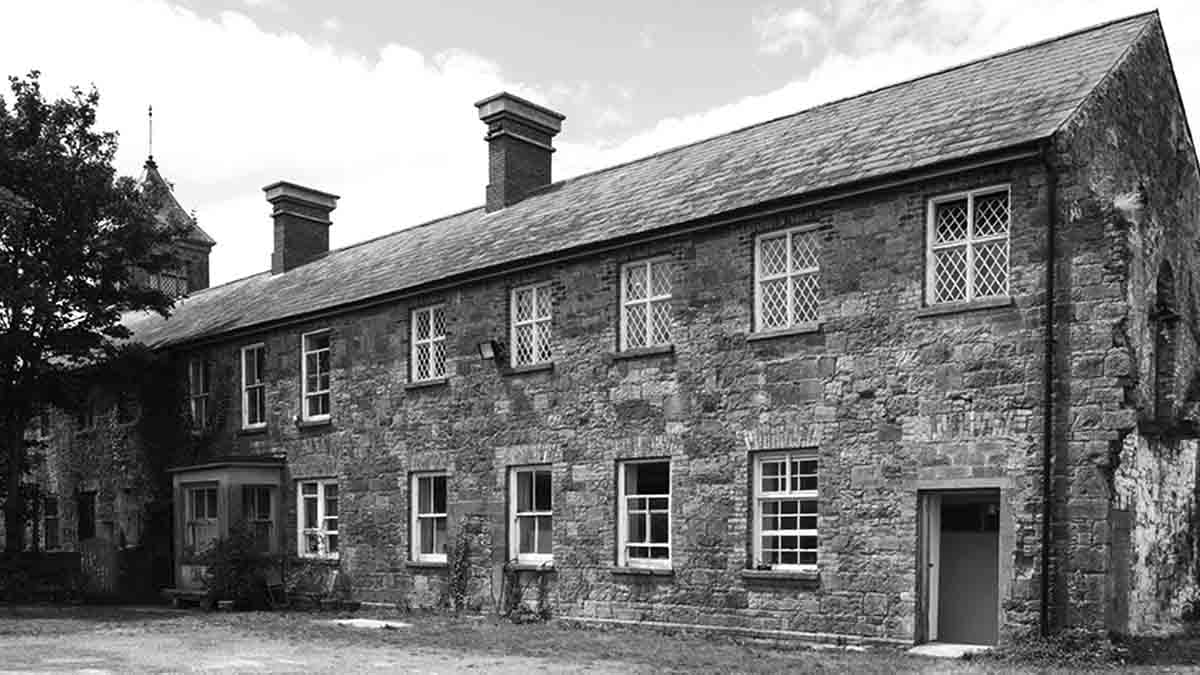BY JOHN FITZGERALD
PART ONE
A building that witnessed the most traumatic events in Irish history has become a cherished heritage asset.
Callan Workhouse is one of the few such structures left standing in Ireland. A monument to the horrors of famine, parts of it have been restored to serve as the local County Council office and a centre for artistic endeavour.
Behind its historic walls painters, designers, and dramatists are busily engaged; working day and night on assignments that have helped to make the town a cultural Mecca, transforming the social landscape with their critically acclaimed projects.
The Workhouse had an altogether different role when Ireland was devastated by the failure of the potato crop in the 1840s. It was chronically overcrowded as thousands of people in the area died of hunger and many more emigrated to escape death and oppression.
The restoration of the administrative section-or Master’s Block-of the Workhouse was hailed nationally as a remarkable achievement. It was saved from possible dereliction and abandonment thanks to a mix of “people power” and an effective inter-agency approach to the challenge.
The restoration followed years of lobbying by Callan Heritage Society and local councillors. The whole community celebrated when the County Council agreed to base its new office for the Callan electoral area in the Master’s Block.
The work on the Master’s Block alone would have been a significant breakthrough in its own right, but the remaining sections of the Workhouse also received attention. A stake-holding group comprising Camphill Community, which caters for people with special needs, Kilkenny County Council, the South Eastern Health Board, and Callan Heritage Society saw to it that the remaining buildings were preserved and, in some instances, adapted for artistic or community-based purposes.
The alliance aimed to develop the Workhouse in a tasteful and yet adventurous way, envisaging, in the words of historian Philip Lynch, a “radical, imaginative, daring initiative, but one very much in keeping with the historical and architectural value of the buildings.”
For the Master’s Block, a delicate balance was achieved in the restoration project, and an element of contemporary design applied only to the building’s interior. This blended soothingly with the existing structures.
The Callan Workhouse is one of only seventeen still standing in Ireland. And the restored Master’s block is one of five remaining on this island. While other workhouses yielded to so-called “progress” and consumerism, Callan was fortunate in having a dedicated band of people looking out for its heritage.
Last month, the Kilkenny Heritage Walking Group arrived to explore the origins and legacy of the Workhouse. Speakers Marianne Kelly and Paddy Neary took us back to the bad old days, recounting a part of our history that must never be forgotten. Local musician, Mick Dawson, played a lament on the bagpipes before the group set off to Cherryfield, a site inextricably linked to the Workhouse story.
Paddy and Marianne were joined by historian Joe Kennedy and the assembled walkers listened spellbound to a sad tale of that “Other Ireland.”
We heard of entire families dropping dead on the roadside or in their makeshift cabins from malnutrition. In Callan and the surrounding countryside, sadistic work schemes added to the misery. Cadaverous, half-starved men were forced to work just to keep themselves and their families alive.
They were ordered to dig holes and fill them in again, or to build stonewalls in remote areas where nobody wanted walls. Many men died performing this soul-destroying labour.
Their wives and children would then be carted off to the Workhouse….
To be continued…





















